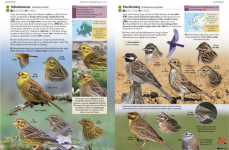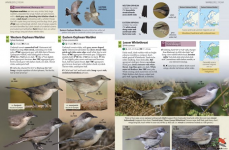DMW
Well-known member
I feel the same way. I actually see digital and physical copies as performing separate functions. I very rarely carry books into the field even on foreign trips, and a phone app means I don't have to, but still have the ability to look something up straight away.I am pretty much the same way; locally, I often just carry my cell phone with the Sibley app. If am going to be someplace where the birds are less familiar though, I much prefer a physical book, even if sometimes they may be awkward to carry. Also with physical books I can jot down notes as needed if I need to update something or if I am using the checklist in the back as an actual checklist.
I will also admit, when I am home studying for a trip or just looking through a book, I just find it more enjoyable to physically page through a book. As someone who spends a large majority of there life online, I like the escape of physical media.
Physical books (for me) are a much better resource for pre-trip study, or for detailed reference once I'm back from the field.
The answer is to have both, and it would be a good idea for publishers to offer both as a discounted package, which I think would increase their overall sales.












